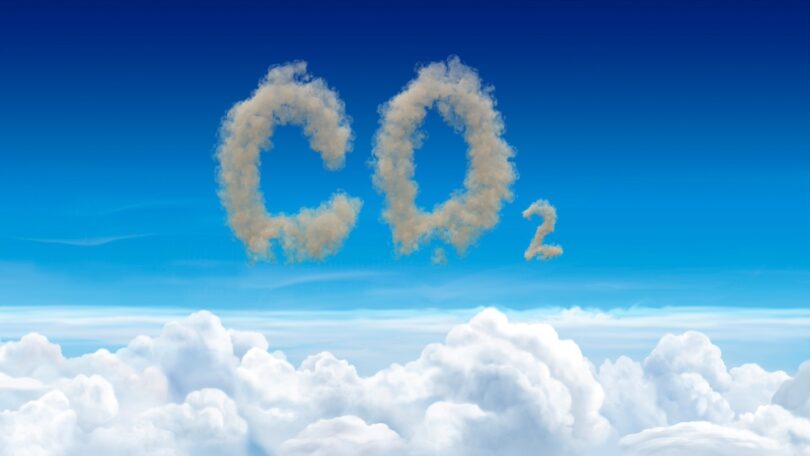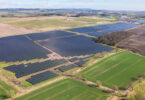In recent years, climate change has become a pressing issue globally. One of the primary culprits behind this phenomenon is carbon dioxide (CO2). But what percentage of CO2 in the atmosphere is natural? Let’s explore this topic in-depth, shedding light on where CO2 comes from and how it impacts our world.
Understanding Carbon Dioxide
Carbon dioxide is a naturally occurring gas found in the Earth’s atmosphere. It’s crucial for life on Earth, as plants use it for photosynthesis—a process that produces oxygen. However, CO2 levels have been rising, leading to global warming and other environmental issues.
What is CO2?
CO2 is a colourless gas composed of one carbon atom and two oxygen atoms. It is a trace gas, constituting about 0.04% of the Earth’s atmosphere. While this may seem insignificant, even small changes in CO2 levels can have substantial impacts.
The Role of CO2 in Life
Carbon dioxide is essential for plants. Through photosynthesis, plants convert CO2 into glucose and oxygen, which are vital for their growth and for sustaining other life forms, including humans and animals.
The Balance of CO2
The Earth’s carbon cycle maintains a balance of CO2 in the atmosphere. Processes like photosynthesis and ocean absorption remove CO2, while processes like respiration and volcanic eruptions add it back. This balance is essential for maintaining a stable climate.
Natural Sources of CO2
Understanding the sources of CO2 helps us discern the percentage that is natural. Various natural processes contribute to the atmospheric CO2 levels.
Volcanic Eruptions
Volcanoes release significant amounts of CO2 during eruptions. Although these events are sporadic, they contribute to the natural carbon dioxide present in the atmosphere.
Respiration of Living Organisms
All aerobic organisms, including humans, produce CO2 through respiration. This natural process constantly adds CO2 to the atmosphere.
Ocean-Atmosphere Exchange
The oceans play a crucial role in the carbon cycle. They absorb and release CO2 through a process known as the ocean-atmosphere exchange. This process helps regulate the amount of CO2 in the atmosphere.
Human Contributions to CO2
While natural sources of CO2 are significant, human activities have drastically altered the balance of CO2 in the atmosphere.
Fossil Fuel Combustion
Burning fossil fuels like coal, oil, and natural gas for energy releases large amounts of CO2. This is the primary human source of CO2 emissions.
Deforestation
Cutting down forests reduces the number of trees available to absorb CO2. This not only increases CO2 levels but also disrupts the natural carbon cycle.
Industrial Processes
Certain industrial activities, such as cement production and metal smelting, also release CO2. These processes contribute to the growing levels of atmospheric CO2.
Measuring CO2 Levels
Accurately measuring CO2 levels is crucial for understanding its impact on climate change. Scientists use various methods to monitor CO2.
Atmospheric Sampling
Atmospheric sampling involves collecting air samples and analysing them for CO2 content. This method provides direct measurements of CO2 levels.
Remote Sensing
Satellites equipped with sensors can measure CO2 concentrations in the atmosphere. This technology allows for global monitoring of CO2 levels.
Ice Core Analysis
Ice cores drilled from glaciers and ice sheets contain bubbles of ancient air. By analysing these bubbles, scientists can determine historical CO2 levels and track changes over time.
The Proportion of Natural vs Human-Made CO2
Determining the percentage of natural CO2 versus human-made CO2 is complex. However, scientific studies provide valuable insights.
Pre-Industrial CO2 Levels
Before the Industrial Revolution, CO2 levels were relatively stable at around 280 parts per million (ppm). This indicates that natural sources and sinks of CO2 were in balance.
Modern CO2 Levels
Today, CO2 levels have risen to over 410 ppm. This increase is primarily attributed to human activities, such as fossil fuel burning and deforestation.
Estimating Natural CO2
While natural processes still contribute to atmospheric CO2, it’s estimated that only about 5% of the current CO2 levels are from natural sources. The remaining 95% is due to human activities.
The Impact of Increased CO2 Levels
Rising CO2 levels have far-reaching consequences for the environment and human society.
Global Warming
Higher CO2 levels contribute to the greenhouse effect, trapping heat in the atmosphere and leading to global warming. This results in rising temperatures and changing weather patterns.
Ocean Acidification
When CO2 dissolves in seawater, it forms carbonic acid. This process, known as ocean acidification, harms marine life, particularly organisms with calcium carbonate shells or skeletons.
Health Implications
Elevated CO2 levels can also affect human health. Poor air quality, resulting from high CO2 concentrations, can lead to respiratory problems and other health issues.
Mitigating CO2 Emissions
Addressing the issue of rising CO2 levels requires concerted efforts at individual, national, and global levels.
Renewable Energy
Transitioning to renewable energy sources, such as solar, wind, and hydroelectric power, can significantly reduce CO2 emissions from fossil fuel combustion.
Reforestation
Planting trees and restoring forests can help absorb CO2 from the atmosphere, mitigating the effects of deforestation and contributing to carbon sequestration.
Carbon Capture and Storage
Technological solutions like carbon capture and storage (CCS) can capture CO2 emissions from industrial processes and store them underground, preventing them from entering the atmosphere.
The Future of CO2 Management
Managing CO2 levels is critical for the future of our planet. Ongoing research and technological advancements offer hope for more effective CO2 management strategies.
Innovative Technologies
Innovations like direct air capture (DAC) technology aim to remove CO2 directly from the atmosphere. These technologies hold promise for reducing atmospheric CO2 levels.
Policy and Regulation
Governments play a crucial role in regulating CO2 emissions. Implementing policies that promote renewable energy and carbon reduction can drive significant progress.
Global Collaboration
Addressing climate change requires global cooperation. International agreements, such as the Paris Agreement, aim to unite countries in the effort to reduce CO2 emissions and combat climate change.
Conclusion
Understanding the percentage of natural CO2 in the atmosphere is essential for addressing climate change. While natural processes contribute to CO2 levels, human activities have significantly increased atmospheric CO2. This rise has far-reaching impacts on our environment, health, and future.
By taking proactive steps to reduce CO2 emissions and adopt sustainable practices, we can mitigate these effects and create a healthier, more sustainable world. Join the effort to combat climate change and make a positive impact on our planet.







